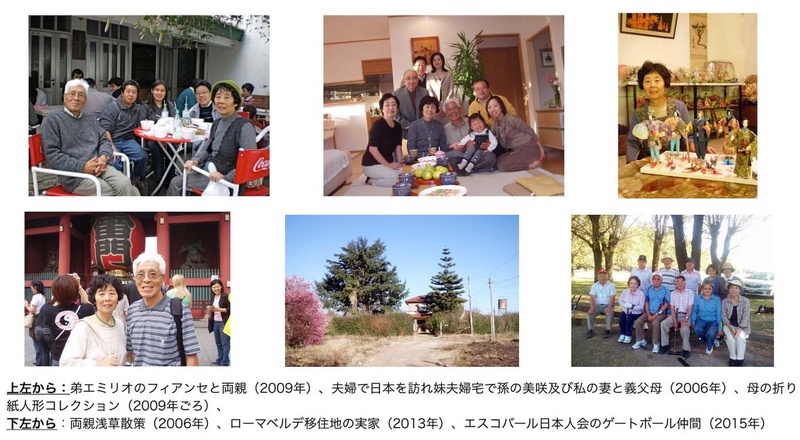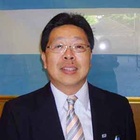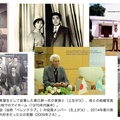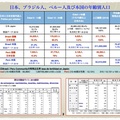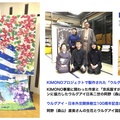Homecoming and us in Japan
My father's first visit to his hometown was in 1970, the year of the Osaka Expo. He was astonished at the tremendous growth and development of Japan. He changed to a Japan Airlines flight in Sao Paulo, Brazil, and drank a bottle of Johnnie Walker whiskey, which was difficult to obtain in Buenos Aires at the time. After arriving at Haneda Airport, he took the Shinkansen to Kagawa Prefecture in Shikoku (transferring at Okayama).
I still remember the postcard my father wrote about that time well because my mother read it to me many times. I was still in the second grade of elementary school at the time, and I was looking forward to receiving a lot of souvenirs (toys). In particular, I played baseball at my Japanese language school, so I was looking forward to receiving a baseball glove as a souvenir.
It had been 13 years since my father last visited Japan, so he seemed to be deeply moved. After returning to Japan, he talked with his friends about what his life would have been like if he had stayed at the agricultural research institute instead of moving to Argentina. Rather than regretting his decision to move, he may have been thinking about his next challenge.
When I was in junior high school, my mother also went back to her hometown by herself. In 1988 and 2006, when the Seto Ohashi Bridge was opened, my father and mother visited Japan together and enjoyed traveling. Every time they returned from Japan, they brought back a lot of food, home appliances, and souvenirs, but when they arrived home, they both said, "Home is the best after all." They also had dinner parties with classmates and relatives, and sometimes paid courtesy visits to the prefectural office, but as the years passed, even though Argentina's economic uncertainty and slump continued, "home is Escobar" became a hometown in Japan.
After we started living in the settlement, our house gradually expanded, we got two cars, and we made more acquaintances, not only from the Japanese Association and the Prefectural Association, but also from Italians and Portuguese. We became particularly close with Emilio, an Italian who managed a large ranch. Every year, Emilio got permission from the ranch owner to cull one cow and one pig, so he held a party on that occasion and invited us. Emilio's family taught my mother how to make bread, butter, ravioli, castella cake, cakes, sausages, and more.
When I entered junior high school, my mother advised me to make as many non-Japanese friends as possible. I developed trust and friendships with my non-Japanese classmates, and we started to visit each other's houses. During my university years, this became more frequent, and my house became a kind of "vacation home" for my close friends. Through these "true interactions," my parents were able to see another side of Argentine society, and they came to realize that not everyone was sly and doing bad things, and they came to understand the importance of connections and ties as well as working hard.
In Essay 1 , my mother wrote that life was difficult during her childhood and that she had experienced some very painful experiences. The ten greenhouses on the land they rented in Escobar were completely destroyed by hail damage, and the landowner's horses ran wild, destroying part of the glasshouse they had just rebuilt. I was about seven years old at the time, but I remember the scene very well, and my father was very disappointed.
My father has also been in two serious traffic accidents. He was hit by a bus and suffered serious injuries, but even when he negotiated with the bus company, they never paid him any compensation or damages, which he felt was unfair. The second accident was on a local bus that runs through a settlement. I went with him to the police station and had the report read and signed by my father, but later the document he actually signed had been rewritten and it was stated that he was at fault. The aftereffects of the neck pain lasted for several years.
Two more times, we were robbed, and our cash and home appliances were stolen. The second time, they even took our car. This time, after returning from Buenos Aires, I organized a search party with some high school classmates and managed to recover it near the slum. I later learned that the four bandits were killed in a shootout with the police in the neighboring town of Pilar a few months later.
But the biggest worry for my parents was when I went to the Malvinas War in 1982 to serve in the islands that became battlefields. My mother, whose father had been killed in World War II, was under a great mental strain and became bedridden. Fortunately, I returned home safely, and after that I successfully graduated from university, studied abroad in Japan, and was able to reassure them that I had fulfilled my role to a certain extent.
When my mother developed heart valve disease in 2002, my three siblings and I worked together to make it possible for her to have surgery in Japan. She was able to successfully complete the 10-hour operation at Yokohama Rosai Hospital, and recovered after rehabilitation. In her essay, my mother wrote, "(omitted)... When I was being watched over and encouraged by my three children and their families, I felt a warmth in my heart that I cannot put into words. I never imagined that the love of my children, who had been away for a while, would support me so much in a place like this... All the hardships of the past 40 years had flown away somewhere. I do not regret the pain I had endured up to that point." After staying there for eight months, she returned to Argentina with many souvenirs. My mother, who was 64 at the time, gave up her busy life and devoted herself to playing gateball with my father and making washi origami (origami dolls), enjoying her hobbies and the rest of her life at a comfortable pace until she passed away in 2013 at the age of 74.
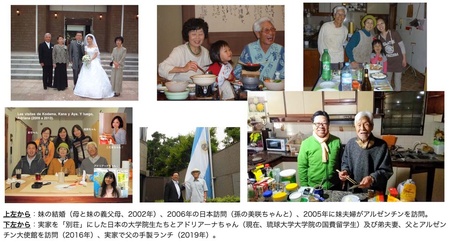
Feeling lonely, my father visited Japan again the following year. During this time, a stomach examination revealed that he had cancer, and my 80-year-old father decided to have surgery. However, the originally planned laparoscopic surgery ended up being a total stomach surgery, and he was unable to recover from that and eventually passed away from old age. As expected, surgery at the age of 80 did not go as the doctor had explained before the operation, and I still cannot accept that that was the best choice. He could have chosen to live with his illness by eating what he liked until he was exhausted and playing gateball. After returning home, he would sometimes say that he wanted to go back to Japan, but as time passed, he no longer had the stamina to endure a 30-hour flight.
My father, born in 1935 in Asano Village, Kagawa County, Kagawa Prefecture (now Takamatsu City), completed his 64 years of life as an immigrant in December 2021. Like many of his peers, he experienced small successes, many setbacks, and several periods of hyperinflation (1989/90) that he was unable to resist, as well as defaults (my father's dollar savings were almost wiped out in defaults in 1982 and 2001, and a near-default in 2019). He lived through a military regime (1976-83) that fought against far-left guerrillas, and an unstable democratic government that was always handing out money (still ongoing). Despite being plagued by the negative factor of worsening public safety (which has not improved much in the last 20 years, except for the Macri administration), he ended his life in a dignified manner in Argentina, where we were born and raised.
I truly believe that my father did a great job with his wonderful teammates and family. I am so grateful to him!
Notes:
1. Kazuko Matsumoto, "History of Housewives' Migration," Kagawa Prefecture History of Migration to South America, pp. 355-358, 2004.
2. My mother, Kazuko, suffered from heart valve disease in 2001. At that time, Argentina declared default, which made it difficult to obtain medical supplies and perform surgery at local hospitals. Therefore, we managed to bring her to Japan and were able to help her.
© 2022 Alberto Matsumoto


